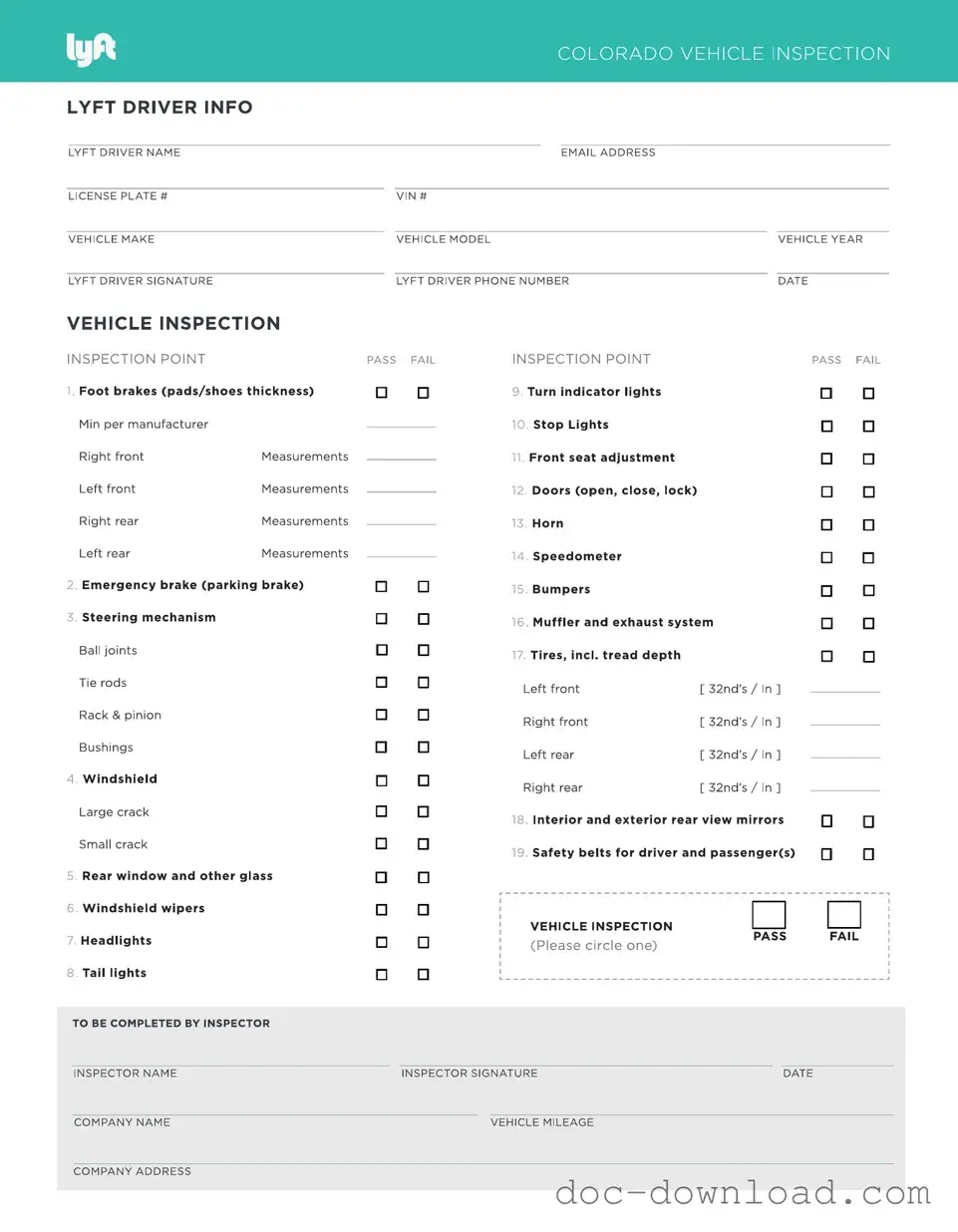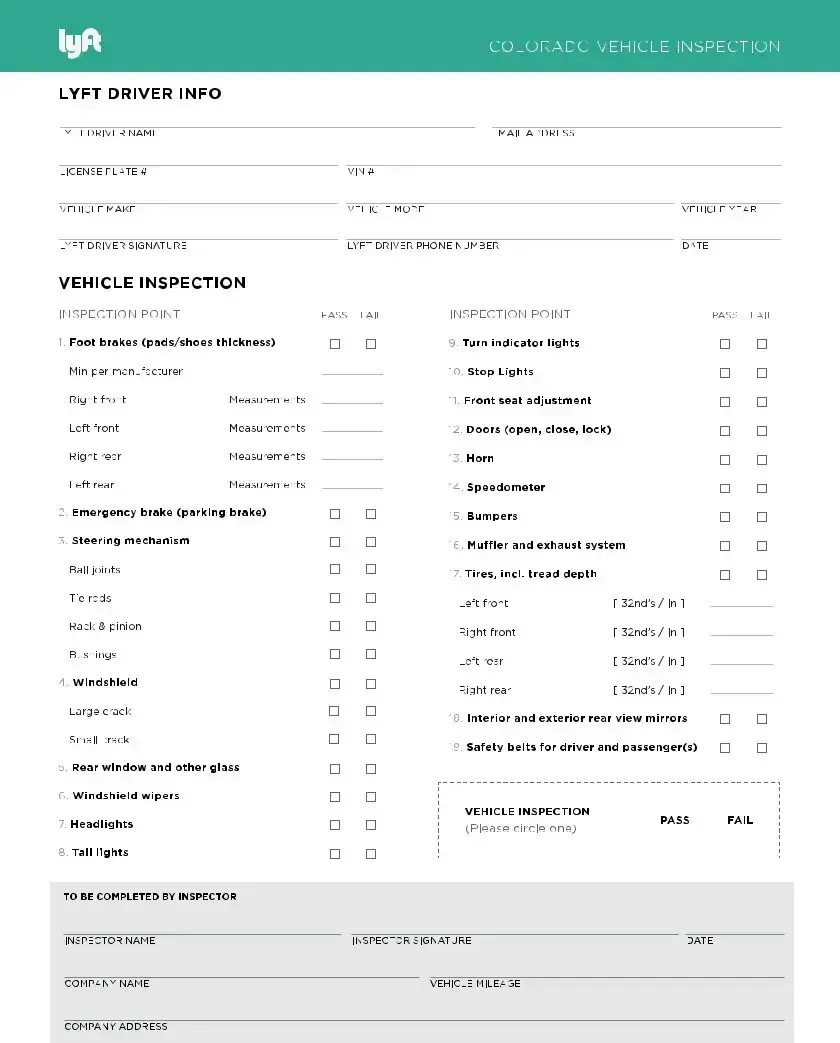The Lyft Inspection form is similar to a Vehicle Inspection Report. This document is typically used to assess the condition of a vehicle before it is put into service or after an incident. Both forms require a thorough examination of the vehicle's essential components, including brakes, lights, and tires. The purpose is to ensure that the vehicle meets safety standards and is roadworthy, protecting both the driver and passengers.
When considering the different vehicle inspection forms in California, it's important to understand their specific purposes and requirements. One such form is the California DV-260 form, which plays a crucial role for individuals seeking protection through a restraining order. This form not only ensures that sensitive information is safeguarded, but also facilitates law enforcement access to essential details for enforcement. For more information about filling out the form, you can visit https://californiapdffoms.com.
Another document that resembles the Lyft Inspection form is the DMV Vehicle Registration form. Like the Lyft Inspection form, this document requires specific information about the vehicle, such as its make, model, and VIN. It serves to confirm that the vehicle is legally registered for use on public roads. Both forms emphasize the importance of maintaining a safe and compliant vehicle for transportation purposes.
A Pre-Trip Inspection Checklist is also comparable to the Lyft Inspection form. This checklist is commonly used by commercial drivers to evaluate their vehicles before starting a journey. It includes a series of checks to ensure the vehicle is safe to operate. Similar to the Lyft Inspection form, the Pre-Trip Inspection Checklist aims to identify any potential issues that could compromise safety during travel.
The Rental Car Inspection form shares similarities with the Lyft Inspection form as well. When renting a vehicle, the rental company requires an inspection to document the car's condition before and after use. Both forms capture details about the vehicle's exterior and interior, helping to protect both the renter and the rental agency from disputes regarding damage or wear.
The Car Maintenance Log serves a similar purpose as the Lyft Inspection form. This document tracks regular maintenance and repairs performed on a vehicle. Like the Lyft Inspection form, it highlights the importance of keeping a vehicle in good condition to ensure safety and reliability. Both documents emphasize the need for routine checks to maintain optimal vehicle performance.
A Bill of Sale for a vehicle is another document that bears resemblance to the Lyft Inspection form. When purchasing a vehicle, the Bill of Sale outlines the condition of the vehicle at the time of sale. It serves as a record of the transaction and includes details about the vehicle's condition, much like the Lyft Inspection form, which aims to confirm the vehicle's roadworthiness.
The Accident Report form is also similar to the Lyft Inspection form. After an accident, this report documents the vehicle's condition and any damage incurred. Both forms require a detailed assessment of the vehicle, ensuring that safety concerns are addressed. The goal is to provide a clear understanding of the vehicle's status, whether for insurance purposes or regulatory compliance.
Finally, the Safety Inspection Certificate is akin to the Lyft Inspection form. This certificate is issued after a vehicle passes a safety inspection, confirming that it meets required safety standards. Both documents serve as a verification tool, ensuring that vehicles are safe for operation on public roads. They play a crucial role in promoting safety and compliance within the transportation sector.

